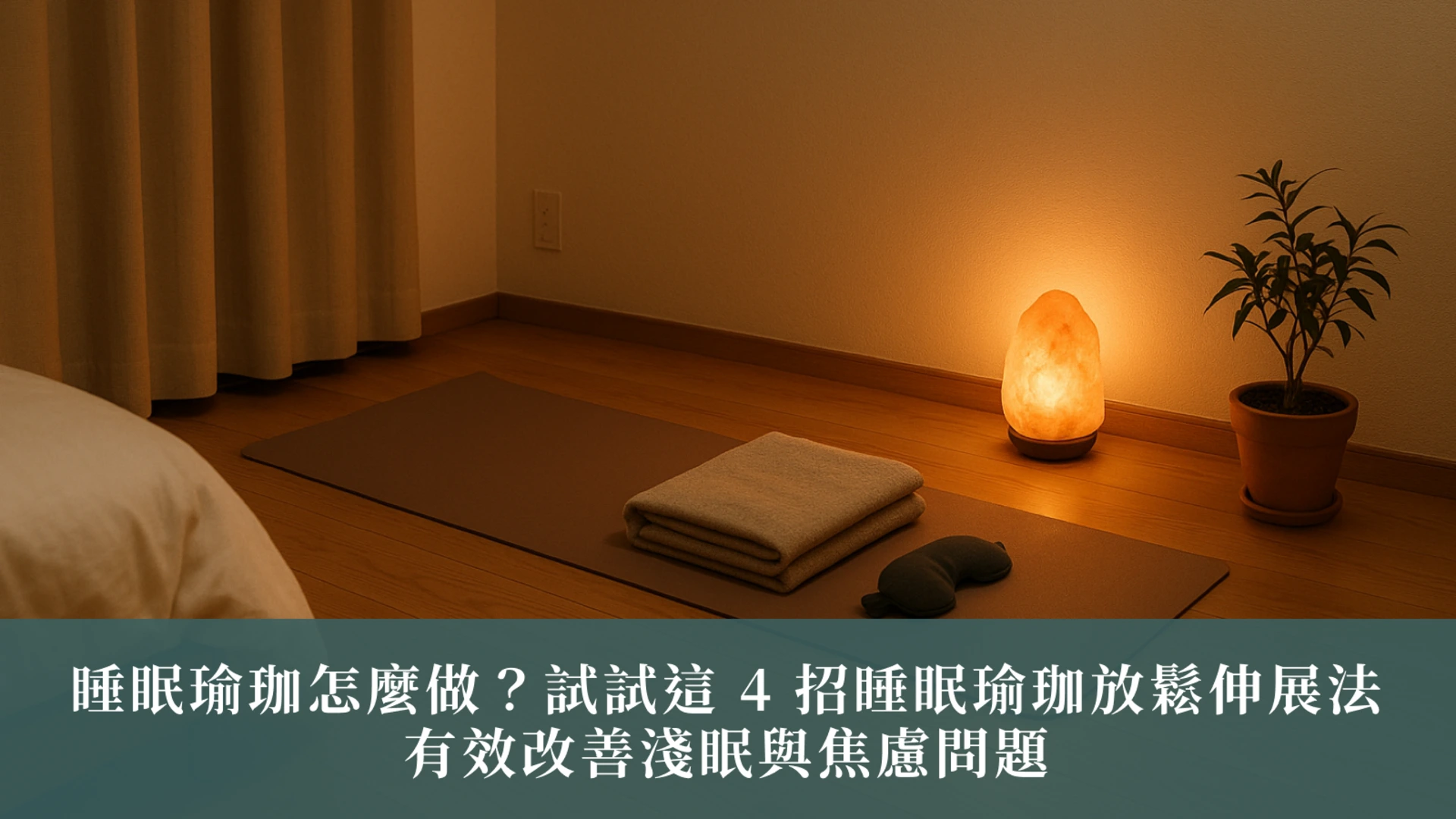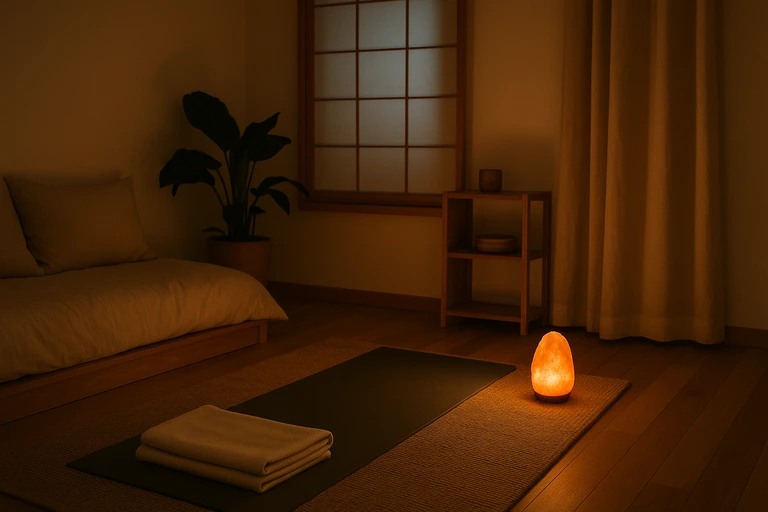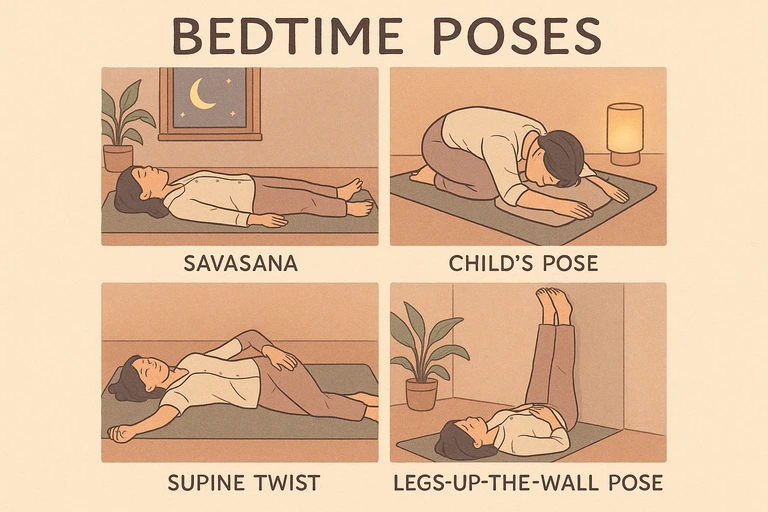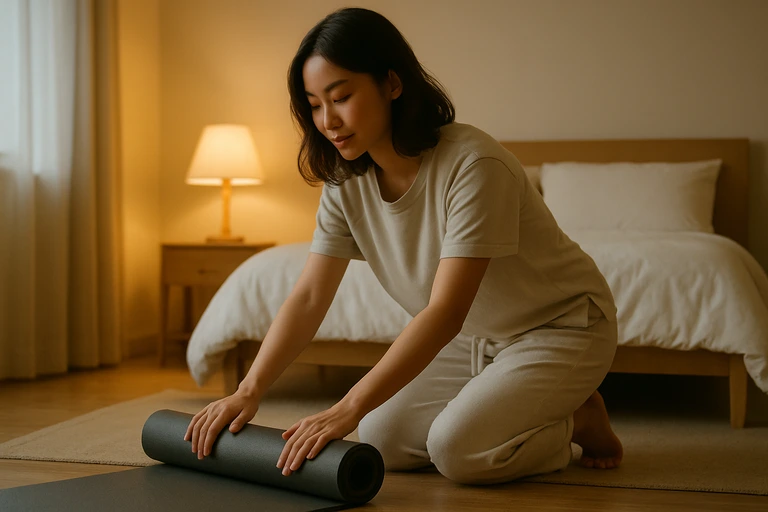
Sleep Yoga Tips Try 4 simple stretches to relax your body, ease anxiety, and improve light sleep.
If you often feel tense and toss and turn before going to bed, it may not necessarily require too many skills. Maybe you just haven't found a relaxation rhythm that suits you. Sleep yoga is a gentle and gentle practice that calms the nervous system through stretching and breathing, helping the body to naturally transition to a resting state. This article will help you understand the key points of choosing a sleep-aiding style, practical movement teaching, and space layout and bedtime ritual suggestions, which are suitable for beginners to practice with peace of mind.
💡 A quick summary of the key points of this article:
- Sleep yoga focuses on rhythm and body response, not intensity.
- Relaxation yoga and Yin yoga are the core of sleep-aiding style
- 4 selected stretching exercises before bed to relieve stress on the nervous system
- Light, smell and rhythm guide the body to let go of the sense of space
How to do sleep yoga effectively? Yin yoga and relaxation yoga are the key to falling asleep
Sleep yoga is not a specific school, but a relaxation practice designed for the physical and mental state at night. It combines the elements of Yin yoga and relaxation yoga, emphasizing low-intensity movements, long stays and deep breathing, with the aim of gradually activating the parasympathetic nervous system and helping the body break away from the tension during the day.
For example, relaxation yoga is mostly done in a sitting or lying position with guided breathing, which is suitable for clearing distractions and calming emotions; the benefits of Yin yoga are static stretching and deep stretching, which can help release pressure on fascia and muscles, and are especially suitable for people who sit for a long time, have stiff shoulders and necks, or are tense for a long time. These movements do not pursue physical performance, but rather build awareness that is synchronized with the body's rhythm.
It should be noted that not all yoga is suitable for bedtime. For example, hot yoga can promote circulation and perspiration, but the large amount of activity and high intensity can easily stimulate the sympathetic nerves, which may make people "physically tired but mentally clear." If the purpose is to improve light sleep and anxiety, it is recommended to choose a slow-paced, sleep-aiding stretching movement that is close to the sleeping state, which can truly help the body switch from "preparation mode" to "repair mode."
These 4 yoga stretches before bed can help your body relax and fall asleep smoothly
The truly effective sleep yoga movements are not about stretching, but about guiding the body from tension to stability through staying, breathing, and perception. The following 4 bedtime movements are suitable for beginners to practice. Each movement can be held for 1 to 3 minutes, accompanied by deep nasal inhalation and exhalation, and feel the body gradually "calming down".
- Savasana + Palms Facing Up
Lie flat on your back with your feet apart and your palms facing up on both sides of your body. This posture may seem simple, but it is actually a basic exercise for deep relaxation and helps to lower your heart rate and brain wave frequency.
- Balasana + Elbows Supporting Forehead
After kneeling, lean forward with your forehead touching the ground or resting on a pillow. You can hug your body with your arms or stretch them forward. This is suitable for releasing back and emotional stress.
- Supine Twist
Lie flat on your back, bend your right knee and stretch it to the left to twist your body. Open your arms and put your shoulders on the ground. This will help relax your back and lumbar spine and regulate your nervous system.
- Legs-Up-the-Wall Pose
Place your legs against the wall at 90 degrees, with your hips close to the corner of the wall, and your hands naturally placed on your abdomen or sides. This movement can reduce leg swelling, stabilize blood circulation, and bring a sense of emotional calmness.
These sleep-inducing stretches only require a quiet space and soft light. It is recommended to turn off your phone notifications when practicing, so that the rhythm can be your only focus, and slowly lead yourself into a state of falling asleep.
Space, light and scent: creating a sleep yoga environment that makes the body want to rest
The effect of yoga does not only come from the movements themselves, but also the rhythm and information released by the space will affect whether the body is willing to relax. Especially for people with long-term anxiety and insomnia, if the space is full of oppression, irritating smells or unstable light sources, even the best sleep-inducing stretching will hardly work.
First, the light . It is recommended to use low color temperature, soft and non-direct light as the principle. Compared with white light or the cold tones emitted by mobile phone screens, using warm yellow night lights or salt lamps can make it easier to make the visual disappear. Secondly, the smell . No strong essential oils are needed. As long as there is a clean, plant-based aroma in the air, such as lavender, cedar or patchouli, it will help calm the mood. If you are sensitive to smells, you can also use a hot towel instead. Warming up the body will naturally lead to relaxation.
Finally, it is about the space layout . There is no need for excessive decoration. A yoga mat, a cushion, a clean floor and a door that is not disturbed are enough to support sleep yoga. The key is not to "create a perfect space", but whether this space can convey the message "you can stop now" to your body.
A bedtime ritual that you can practice every day: Create your own relaxation rhythm
Instead of pursuing complex relaxation techniques, it is better to start with a small and stable bedtime ritual. For many people who have chronically poor sleep, the body is not refusing to sleep, but does not know when to stop. Sleep yoga provides not only movements, but also a reminder of rhythm - now, you can slow down.
This rhythm does not need to be fixed, but it is recommended to start with a fixed time and simple structure, such as "5 minutes of stretching + 3 minutes of breathing observation after turning off the lights", so that the body can establish an automatic connection of "relaxation → rest → falling asleep" through repetitive practice. You can choose to repeat 1~2 of the yoga moves before bed every day, not too many, just deep; you can also add an action that makes the body feel safe, such as: laying out the yoga mat, turning on the dim light, and turning off the phone notification.
Many insomnia problems come from disordered rhythm and overstimulation, not a single event. When you are willing to leave yourself an undisturbed space at the end of each day, your body will naturally begin to recognize that "it's time to rest." This may be the most gentle and practical way to help you sleep.
Slow down your body so that falling asleep will happen naturally
Sleep is not a "goal", but a natural reaction after the body lets go. The key to sleep yoga is not how many movements you can do, but to practice how to slowly take back the rhythm of the day through simple stretching and breathing. Instead of rushing to fall asleep, it is better to give yourself an undisturbed moment, starting with 5 minutes of relaxation movements, so that the body can learn to distinguish: "Now you can rest."
You don’t need to do too much tonight. Maybe just a corpse pose and a night light can help you slowly find the rhythm of the night after being tense all day.


